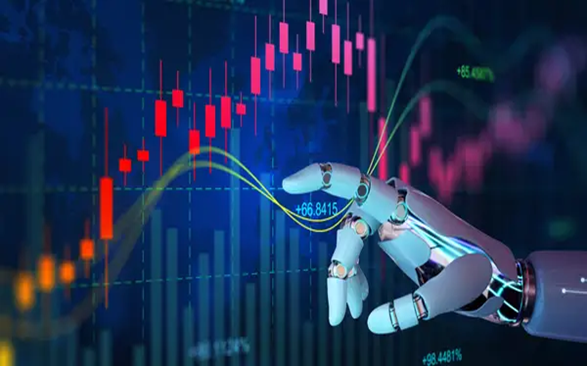The rapid advancement of artificial intelligence (AI) is greatly influencing various sectors, and cryptocurrency trading is no exception. AI has emerged as a powerful tool, offering unprecedented capabilities in analyzing market trends, predicting price movements, and executing trades with remarkable speed and precision.
For crypto traders and investors, AI-driven strategies promise to enhance decision-making, reduce risks, and potentially maximize returns. However, this technological leap forward is not without its complexities.
While AI brings numerous advantages to the table, it also introduces a host of new challenges and risks that market participants should be aware of. In this article, we will explore the role of AI in cryptocurrency trading, considering both the transformative benefits and the potential pitfalls that accompany this rapidly evolving technology.
Key applications of AI in cryptocurrency trading
The intersection of AI and crypto trading is not just a theory; it is actively shaping how trades are executed and markets are analyzed. Below are some key applications of AI in crypto trading:
- Data analysis and market forecasting
One of the most compelling benefits of AI in cryptocurrency trading is its ability to process and analyze vast amounts of data far more efficiently and faster than any human could. This capability is particularly critical in the crypto market, where prices can be highly volatile, and timely information is crucial.
AI algorithms can sift through millions of data points, including historical price data, trading volumes, news articles, social media posts, and even macroeconomic indicators, to identify patterns and correlations that might not be immediately apparent to human traders.
In other words, AI systems use machine learning models to forecast crypto price movements by analyzing historical data and identifying trends. These predictions can be short-term, such as forecasting minute-by-minute price changes, or long-term, predicting market behavior over days or weeks.
Sentiment analysis is another critical aspect. By analyzing large volumes of text data from news sources, social media platforms, and forums, AI can gauge market sentiment towards a particular cryptocurrency. For example, a surge in positive sentiment about bitcoin (BTC) on social media could signal a potential price increase. Traders can use this information to adjust their positions accordingly.
- Automated trading systems or bots
Automated trading systems, often referred to as “algorithmic trading,” are perhaps the most direct application of AI in cryptocurrency trading. AI-powered trading bots are among the most popular tools within the crypto ecosystem. These bots operate autonomously, executing trades based on predefined criteria set by the user or, in more advanced cases, by learning and adapting through machine learning algorithms.
The appeal of trading bots lies in their ability to function 24/7, taking advantage of opportunities in the market even when human traders are unavailable. This round-the-clock operation is particularly beneficial in the cryptocurrency market, which never sleeps and is constantly influenced by several elements, including global regulatory developments and macroeconomic factors.
- Machine learning and adaptive strategies
Moreover, AI-driven trading strategies can be backtested against historical data to optimize performance before being deployed in live markets. This process allows traders to fine-tune their strategies and improve their chances of success.
Additionally, AI can help mitigate some of the emotional biases that often plague human traders. Decisions driven by greed, fear of missing out (FOMO), fear, uncertainty and doubt (FUD), or other emotions can lead to potential losses. However, AI, operating purely on codes and data, can help ensure that trading strategies remain consistent and objective.
However, the benefits of AI in cryptocurrency trading extend beyond just data analysis and automation. Machine learning models, a subset of AI, have the ability to improve over time. As they process more data and encounter various market conditions, these models can adapt and refine their predictions, potentially increasing their accuracy and effectiveness.
- Portfolio management and risk assessment
AI also plays a significant role in portfolio management and risk assessment. Advanced AI algorithms can evaluate a trader’s portfolio, assess risk levels, and suggest adjustments to optimize returns while minimizing risk. For instance, AI can identify correlations between different assets in a portfolio and recommend diversification strategies to reduce exposure to market volatility.
Read also: Artificial Intelligence Crypto Projects: Top 5 AI Cryptocurrencies
The risks associated with AI adoption in crypto trading
Despite the advantages, the integration of AI in cryptocurrency trading also presents several significant risks and challenges. One of the most pressing concerns is the potential for over-reliance on AI algorithms.
While these systems can process information at incredible speeds and make decisions based on data-driven insights, they are not infallible. AI models are only as good as the data they are trained on, and in a market as volatile as cryptocurrency, even the most advanced algorithms can make mistakes.
For instance, unforeseen events or market capitulation occurrences that fall outside the scope of the AI’s training data can lead to inaccurate predictions and significant financial losses. A typical example is the recent crash in bitcoin (BTC) below $50,000, which was caused by rumors of a global recession and other fundamentals. It’s clearly difficult for AI algorithms or trading bots to factor in these metrics in its analysis.
Another potential drawback of AI in cryptocurrency trading is the risk of algorithmic failures. In cases where AI systems are deployed without sufficient testing or monitoring, there is a possibility that these systems could malfunction or behave unpredictably, leading to unintended consequences. For example, an algorithmic error could result in a series of erroneous trades, causing significant financial losses.
Conclusion
The integration of AI into cryptocurrency trading has undoubtedly impacted the market, offering traders and investors powerful tools to explore the complexities of digital asset trading. The benefits of AI—ranging from enhanced data analysis and automation to the ability to mitigate emotional biases—are substantial, providing a competitive edge in the volatile market. However, AI adoption also comes with significant risks and challenges, including algorithmic failure and reduced human oversight.
Moreover, developing and maintaining sophisticated AI systems for cryptocurrency trading requires significant financial investment. Not only does this include the cost of developing and testing AI algorithms, but also the continuous need for data updates, model refinement, and system monitoring.
Read also: Beyond the Hype: Improving Usability of Web3 Applications Through Good UX Design
Ndianabasi Tom A crypto journalist and content writer who has been talking about cryptocurrency and blockchain technology since 2018, Ndianabasi is a Writer at Crypto Asset Buyer (CAB).
Discover more from Crypto Asset Buyer
Subscribe to get the latest posts sent to your email.




